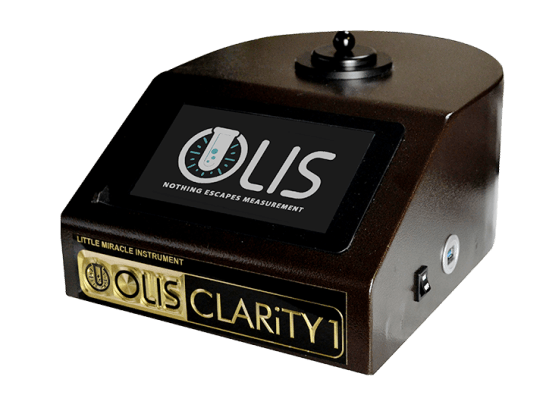How Uv/vis can Save You Time, Stress, and Money.
The Single Strategy To Use For Circularly Polarized Luminescence
Table of ContentsSpectrophotometers Can Be Fun For EveryoneThe smart Trick of Circularly Polarized Luminescence That Nobody is DiscussingThe 20-Second Trick For Uv/visThe Definitive Guide for Circularly Polarized LuminescenceSpectrophotometers Fundamentals Explained

Although spectrophotometry is most commonly used to ultraviolet, visible, and infrared radiation, modern-day spectrophotometers can interrogate large swaths of the electromagnetic spectrum, including x-ray, ultraviolet, noticeable, infrared, and/or microwave wavelengths. Spectrophotometry is a tool that depends upon the quantitative analysis of molecules depending upon just how much light is soaked up by colored compounds.
The Of Uv/vis/nir
A spectrophotometer is frequently used for the measurement of transmittance or reflectance of solutions, transparent or opaque solids, such as refined glass, or gases. Although numerous biochemicals are colored, as in, they soak up visible light and therefore can be determined by colorimetric treatments, even colorless biochemicals can frequently be transformed to colored compounds suitable for chromogenic color-forming responses to yield substances appropriate for colorimetric analysis.: 65 However, they can also be designed to measure the diffusivity on any of the listed light varieties that generally cover around 2002500 nm utilizing different controls and calibrations.
An example of an experiment in which spectrophotometry is used is the decision of the equilibrium constant of a solution. A specific chemical reaction within an option might take place in a forward and reverse direction, where reactants form items and items break down into reactants. At some time, this chain reaction will reach a point of balance called a balance point.
Little Known Questions About Uv/vis.
The amount of light that goes through the option is indicative of the concentration of certain chemicals that do not permit light to go through. The absorption of light is due to the interaction of light with the electronic and vibrational modes of molecules. Each kind of molecule has a private set of energy levels related to the makeup of its chemical bonds and nuclei and hence will soak up light of specific wavelengths, or energies, resulting in special spectral homes.
They are widely used in lots of markets including semiconductors, laser and optical manufacturing, printing and forensic evaluation, as well as in laboratories for the study of chemical compounds. Spectrophotometry is often utilized in measurements of enzyme activities, decisions of protein concentrations, determinations of enzymatic kinetic constants, and measurements of ligand binding reactions.: 65 Ultimately, a spectrophotometer is able to determine, depending on the control or calibration, what compounds are present in a target and exactly how much through estimations of observed wavelengths.
This would come as a solution to the previously produced spectrophotometers which were not able to soak up the ultraviolet properly.
Examine This Report on Uv/vis
It would be discovered that this did not provide satisfying outcomes, therefore in Model B, there was a shift from a glass to a quartz prism which enabled better absorbance results - UV/Vis/NIR (https://www.wattpad.com/user/olisclarity1). From there, Model C was born with an adjustment to the wavelength resolution which wound up having 3 systems of it produced
It irradiates the sample with polychromatic light which the sample soaks up depending upon its homes. It is transferred back by grating the photodiode array which spots the wavelength area of the spectrum. Given that then, the development and application of spectrophotometry gadgets has actually increased profoundly and has turned their website into one of the most ingenious instruments of our time.

Unknown Facts About Uv/vis/nir
The grating can either be movable or repaired.
In such systems, the grating is fixed and the strength of each wavelength of light is determined by a different detector in the range. When making transmission measurements, the spectrophotometer quantitatively compares the portion of light that passes through a reference service and a test service, then digitally compares the strengths of the two signals and calculates the portion of transmission of the sample compared to the recommendation standard.
